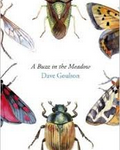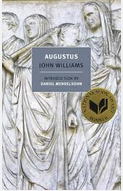 Over in the meadow, the old song tells us, live turtles, fish, rats, birds, bees, owls, frogs, and lizards, among the trees and flowers and rushes. All of them are dependent on smaller but still visible animals, insects mostly, including spiders, beetles, snails, and butterflies. They in turn are dependent on even smaller creatures, and so on down to the bacteria. We love the larger animals, most of them, and we need the plants to keep us alive. We understand the web that enmeshes us with the larger animals and plants, and even insects. We also regard many more of the insects as nuisances or worse, and are bent on destroying them without considering the consequences to us. Dave Goulson is a biologist, and he loves bugs for themselves – their life cycles, their evolutionary niches and challenges, their different reproductive strategies. But his larger point is that insects are necessary to the continuity of life – the growth and decay of plants – and we destroy them, and their habitat, at our peril.
Over in the meadow, the old song tells us, live turtles, fish, rats, birds, bees, owls, frogs, and lizards, among the trees and flowers and rushes. All of them are dependent on smaller but still visible animals, insects mostly, including spiders, beetles, snails, and butterflies. They in turn are dependent on even smaller creatures, and so on down to the bacteria. We love the larger animals, most of them, and we need the plants to keep us alive. We understand the web that enmeshes us with the larger animals and plants, and even insects. We also regard many more of the insects as nuisances or worse, and are bent on destroying them without considering the consequences to us. Dave Goulson is a biologist, and he loves bugs for themselves – their life cycles, their evolutionary niches and challenges, their different reproductive strategies. But his larger point is that insects are necessary to the continuity of life – the growth and decay of plants – and we destroy them, and their habitat, at our peril.
Goulson is lucky enough to have bought a farmhouse and the surrounding land in a rural part of France, the Charente, and the first part of his book consists of an extended tour through the fauna (and some of the flora) surrounding or inside the house. There’s a chapter about newts, and another about flies. If you’re interested in why dragon flies often zip around locked together, or whether female mantises always eat their mates during copulation, there’s a chapter about that. Goulson describes an experiment to see whether males were willing meals as well as mates.
The results of our studies were pretty clear. At no point could we discern any sign that the male was a willing victim of cannibalism. Their approaches to females were cautious, and after mating they would either leap off and run for it or edge discreetly off her back, keeping well away from her front end . . . When confined with a female in a simple, undecorated cage, the males were more likely to be consumed, usually without mating, than when there were plentiful twigs and leaves. When confined with a hungry female, their chances were not great.
Food comes first, before reproduction, at least for the mantis.
In the second part, Goulson focuses on the role of insects, particularly bees, in pollination, “a web of deception, competition and robbery” that gives rise to a great diversity of life. Here Goulson touches on some of the ground he covered in his earlier book “A Sting in the Tale,” reviewed here. As in the first part, each chapter begins with a diary note that includes the time of the day’s run and the species he spotted. It’s an attempt to recapture the charming persona evident in the first book, and wears a little thin – better to skip the lists and focus on the epigraphs, which capture Goulson’s sense of humor.
It’s in the third and final section that the book comes together, because that’s where Goulson makes his argument: the world is full of a huge number of things, all of them interrelated in ways that we don’t at all understand, for all our ability to decode the genome of any of them. Plants and animals, fungi, viruses and bacteria, most of which we haven’t even identified, do not live in isolation, he says. “Their lives, and ours, are inextricably woven together. We don’t know how it all works- and yet we are thoughtlessly picking it apart.” One of his examples is disappearing bees, more formally known as Colony Collapse Disorder. One contributor to that disaster seems to be a new kind of pesticide, neonicotinoids, applied in a new kind of way – to the seed, which then incorporates the pesticide into the plant. The pesticide stays around long enough to allow the plant to grow, but then deconstructs by the time of harvest. The manufacturers produced studies showing that bees absorbed doses too low to be lethal. But longer term studies showed that bees that fed on those crops produced fewer queens, and with fewer queens there will be fewer bees. The European Union suspended the use of three neonicotinoids in 2013, and the EPA has restricted their use in this country as well. Writ large, and in combination with climate change, Colony Collapse Disorder and similar collapses of insect populations could mean a very different world for our grandchildren.
What’s your take on this thoughtful book? Of if you’d rather, your favorite insect? (This reviewer is partial to the death watch beetles.) Let us know in the comments.



